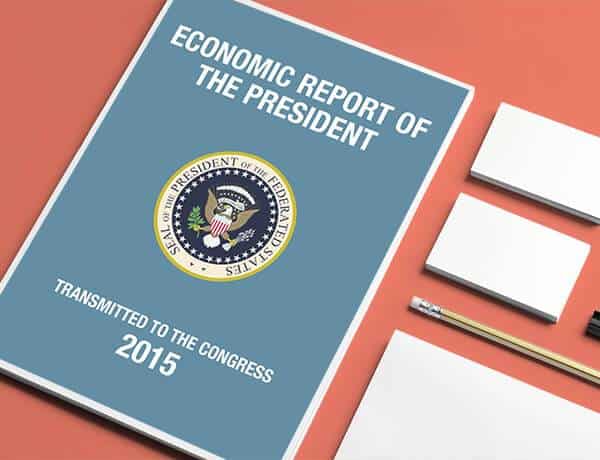Please provide your information and submit this form. Our team will be in touch with you shortly.
Tip: The University of California at Santa Barbara keeps an archive of Economic Reports of the President from Harry Truman’s 1947 report to the latest edition.
Source: Presidency.ucsb.edu, 2017
In February, the White House released its 563-page book, “2018 Economic Report of the President.”¹ If you haven’t yet made time to peruse this weighty tome, don’t beat yourself up. Most people don’t take the time to read the report—still others don’t even know it exists.
What is the “Economic Report of the President” and what does it tell us about the economy and the future?
In the wake of World War II—and worried that the economy might fall back into another Great Depression—Congress passed the Employment Act of 1946, which established the President’s Council of Economic Advisors to analyze government programs and make recommendations on economic policy. It also mandated that the president submit an annual economic report to Congress. The first report was submitted by Harry Truman in 1947.²
The report is written by the Chair of the Council of Economic Advisors and includes both text and extensive data appendices.³ It must be submitted to Congress no later than 10 days after the submission of the Federal budget by the President of the United States. Although each report is different, they generally include such information as
- Current and foreseeable trends in employment, production, real income, and Federal expenses
- Employment objectives for various labor sectors
- Annual goals
- A program for carrying out objectives.
Response to the Economic Report is often mixed. Opponents to the administration tend to be critical of the president’s approach. They point out that the objectives and recommendations in the report are inevitably influenced by the administration’s opinion and policy.
However it’s important not to overlook the sheer volume of data provided by the report. This information can help identify the forces driving—or dragging—the economy. For example, the 2018 report
provides data and analysis on many subjects including tax reform, deregulation, and trade.4
If you don’t see yourself getting cozy with a cup of coffee and the Economic Report of the President, you might consider using the internet to get an overview of its most relevant topics. Understanding the current state of the economy—and the president’s objectives for the future—may help you make plans for your own future.
- Whitehouse.gov, 2018
- Presidency.ucsb.edu, 2017
- Whitehouse.gov, 2017
- Whitehouse.gov, 2018


